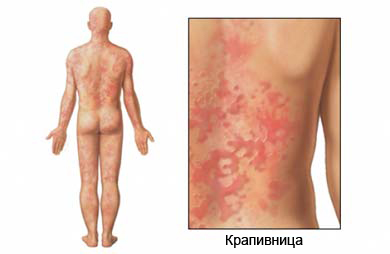Allergies to peanuts – Allergies to nuts
Description of peanut allergy
Peanut allergy occurs, when the body responds abnormally to the contact with peanuts. Reactions can vary from mild to life-threatening. Even a very small amount peanut can cause a serious reaction. Peanut allergy is particularly common in children.
This disorder can be life-threatening and requires a doctor's visit.
Causes of peanut allergy
Allergy occurs, when the body is exposed to peanut proteins. The body perceives as a harmful proteins, and the immune system produces a substance, which cause the symptoms.
Contact with peanuts can occur in the following cases:
- When the consumption of peanuts and products, containing it, products or, have been in contact with peanuts;
- Touching peanuts;
- Inhalation particles, containing peanuts (eg, peanut flour).
Risk factors for peanut allergy
Risk factors include:
- Age – alimentary allergy, such as an allergy to peanuts, It is frequent in children;
- The presence of other allergens (eg, other alimentary allergy, hay fever);
- Personal or family history of allergies;
- Atopic dermatitis (chronic inflammation of the outer layers of the skin).
Symptoms of peanut allergy
Symptoms may include:
- Rash (redness or swelling of the skin);
- Itching or tingling in the mouth and throat;
- Diarrhea;
- Stomach cramps;
- Nausea;
- Vomiting;
- Difficulty breathing or hoarseness;
- Refine in Gruda;
- Runny or stuffy nose.

Symptoms, which may be a sign of a very serious allergic reaction (anaphylaxis) may include:
- Closure airways or throat edema;
- Severe drop in blood pressure;
- Very fast pulse;
- Dizziness;
- Loss of consciousness.
If a serious allergic reaction, you should immediately call an ambulance.
Diagnosis of peanut allergy
You may be directed to the doctor, who specializes in allergies. Doctor:
- Ask about your symptoms;
- By studying your medical history;
- A physical exam.
Tests may include:
- Skin prick test – the physician will cause a small amount of food particles on your forearm or back. Then it pricks the skin using a needle, the particles were in the skin. If there is a response (eg, rashes, bruise), it may be a sign of having an allergy to food verifiable;
- Blood test – the doctor will take a blood sample. The blood will be tested for antibodies, called immunoglobulin E (IgE). IgE is a type of protein, which the body produces in case of allergies.
A food diary
The doctor may ask you to keep a food diary. It means, What will you record what you ate, your eating habits and symptoms after eating. This can help your doctor find out, what food could be the cause of allergies.
An elimination diet
The doctor can move you èliminacionnuû diet, to find out, What foods can cause an allergic reaction. If the doctor says, that you may be allergic to peanuts, It may exclude the peanuts from the diet on 1-2 of the week, and then resume reception, to see, any allergy symptoms. An elimination diet is prescribed only under medical supervision.
Treatment for peanut allergy
Treatments include:
Avoiding peanuts
The best method – avoid peanuts, products, containing it, and product, who could be exposed to peanuts. Always read the label with the composition. Even if you are sure, that the food does not contain peanuts, again check the label. If you're buying domestic products, always ask about the ingredients, to ensure no peanut or peanut butter.
Treatment for peanut allergy medicines
If you have a mild allergic reaction is present, you can take antihistamines, to reduce some of the symptoms, such as itching or rash. Ask your doctor about medicines, are encouraged to take.
An injection of epinephrine
Severe allergic reactions, perhaps, You need to administer the drug, It called adrenaline. Epinephrine injected using the automatic injector, syringes which comprises, needle, and dose of medicine. The injection should be carried out in the thigh. It is recommended to carry a kit with adrenaline.
If any serious reaction immediately seek medical advice.
Prevention of allergies to peanuts
Although you can not prevent a peanut allergy, you can prevent the reaction to it. To reduce the chance of reaction to peanuts, Follow these steps::
- Avoid peanuts, products, containing peanuts, and product, that were exposed to peanut. For Example, When ordering in a restaurant, ask, whether the dish is cooked peanut or any of its products to (eg, sauce or oil), which may contain peanuts;
- Read food labels, as well as other products (medicines, cosmetics, face cream). It is very difficult to say exactly, some products may contain peanuts.
Below are some products, which may contain peanuts or, perhaps, They were made using the components of peanuts:
- Cookies;
- Ice cream;
- Chocolate bars;
- Bread;
- Salad dressing;
- Chocolate candies;
- Nut-oil;
- Sauces and gravies;
- Vegetarian Food (eg, veggie burgers).
This list can be endless. That is why it is important to be aware of, what you eat or what come in contact. Even the smallest amount of peanut protein can cause life-threatening reactions.
